For the 2025 school year, there is 1 public high school serving 633 students in Austin Achieve School District. This district's average high testing ranking is 1/10, which is in the bottom 50% of public high schools in Texas.
ÎÛÎÛÂþ» High School in Austin Achieve School District have an average math proficiency score of 8% (versus the Texas public high school average of 37%), and reading proficiency score of 30% (versus the 47% statewide average).
Minority enrollment is 98% of the student body (majority Hispanic), which is more than the Texas public high school average of 74% (majority Hispanic).
Overview
This School District
This State (TX)
# Schools
5 Schools
2,552 Schools
# Students
2,647 Students
1,864,677 Students
# Teachers
180 Teachers
125,506 Teachers
Student : Teacher Ratio
15:1
15:1
District Rank
Austin Achieve School District, which is ranked #1154 of all 1,196 school districts in Texas (based off of combined math and reading proficiency testing data) for the 2021-2022 school year.
The school district's graduation rate of 85-89% has increased from 80-84% over five school years.
Overall District Rank
#1153 out of 1204 school districts
(Bottom 50%)
(Bottom 50%)
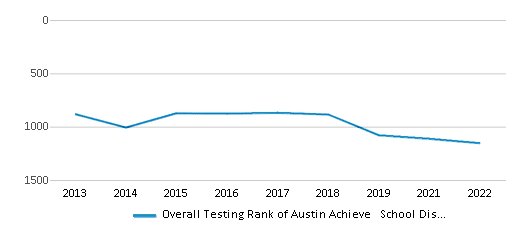
Math Test Scores (% Proficient)
19%
41%

Reading/Language Arts Test Scores (% Proficient)
26%
51%
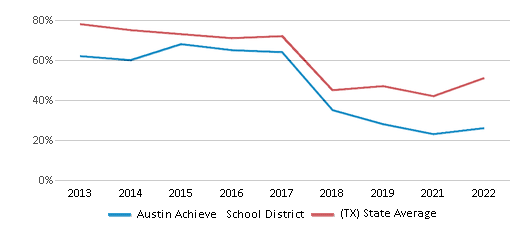
Science Test Scores (% Proficient)
20%
46%
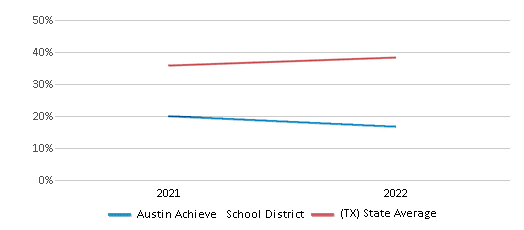
Graduation Rate
85-89%
90%

Students by Ethnicity:
Diversity Score
0.30
0.64
# American Indian Students
4 Students
6,249 Students
% American Indian Students
n/a
n/a
# Asian Students
26 Students
95,920 Students
% Asian Students
1%
5%
# Hispanic Students
2,186 Students
992,082 Students
% Hispanic Students
83%
53%
# Black Students
347 Students
234,075 Students
% Black Students
13%
13%
# White Students
59 Students
483,077 Students
% White Students
2%
26%
# Hawaiian Students
3 Students
2,934 Students
% Hawaiian Students
n/a
n/a
# Two or more races Students
22 Students
50,340 Students
% of Two or more races Students
1%
3%
Students by Grade:
# Students in PK Grade:
317
6,571
# Students in K Grade:
196
9,336
# Students in 1st Grade:
177
10,076
# Students in 2nd Grade:
200
10,215
# Students in 3rd Grade:
177
10,512
# Students in 4th Grade:
166
10,681
# Students in 5th Grade:
178
11,658
# Students in 6th Grade:
202
32,105
# Students in 7th Grade:
196
38,290
# Students in 8th Grade:
205
40,744
# Students in 9th Grade:
166
472,263
# Students in 10th Grade:
148
438,622
# Students in 11th Grade:
169
406,207
# Students in 12th Grade:
150
367,397
# Ungraded Students:
-
-
District Revenue and Spending
The revenue/student of $11,982 in this school district is less than the state median of $13,387. The school district revenue/student has declined by 17% over four school years.
The school district's spending/student of $9,399 is less than the state median of $14,116. The school district spending/student has declined by 17% over four school years.
Total Revenue
$32 MM
$74,029 MM
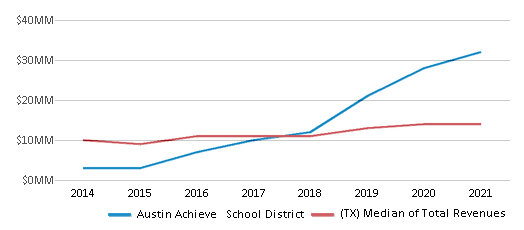
Spending
$25 MM
$78,063 MM
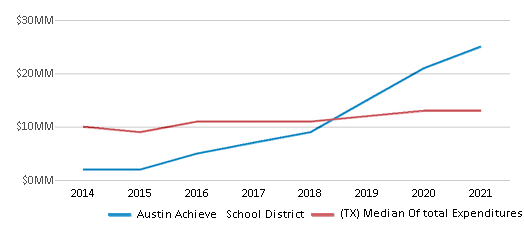
Revenue / Student
$11,982
$13,387
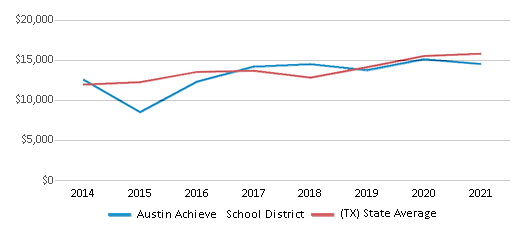
Spending / Student
$9,399
$14,116
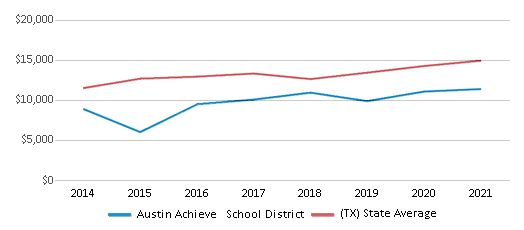
Best Austin Achieve School District ÎÛÎÛÂþ» High Schools (2025)
School
(Math and Reading Proficiency)
(Math and Reading Proficiency)
Location
Grades
Students
Rank: #11.
Austin Achieve High School
Charter School
(Math: 6-9% | Reading: 30%)
Rank:
Rank:
1/
Bottom 50%10
7424 E Hwy 290 Building 2
Austin, TX 78723
(512) 522-4190
Austin, TX 78723
(512) 522-4190
Grades: 9-12
| 633 students
Recent Articles

Year-Round Or Traditional Schedule?
Which is more appropriate for your child? A year-round attendance schedule or traditional schedule? We look at the pros and cons.

Why You Should Encourage Your Child to Join a Sports Team
Participating in team sports has a great many benefits for children, there is no doubt. In this article you will learn what those benefits are.

White Students are Now the Minority in U.S. ÎÛÎÛÂþ» Schools
Increasing birth rates among immigrant families from Asia and Central and South America, combined with lower birth rates among white families, means that for the first time in history, public school students in the United States are majority-minority. This shift in demographics poses difficulties for schools as they work to accommodate children of varying language abilities and socio-economic backgrounds.





